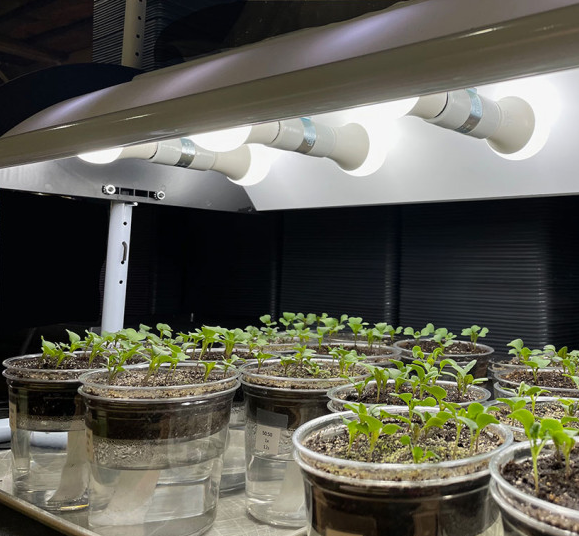Use Grow Lights for Seedlings
Most rooms don’t get enough light to grow healthy seedlings. Your plant might not get enough sunlight through a south-facing window. Most seeds will do fine and grow their first set of leaves on top of a warm windowsill. But then the ‘stretch’ starts as stems struggle to get as much light as possible to support their fast growth rates.
Avoid leggy seedlings by placing your seedlings under artificial light which can be made from conventional shop lights with fitted fluorescent tubes or energy-saving LED bulbs. These bright lights provide blue and red light waves necessary for good plant growth. If you are curious about why your houseplant is dropping leaves try changing how much light it gets.






